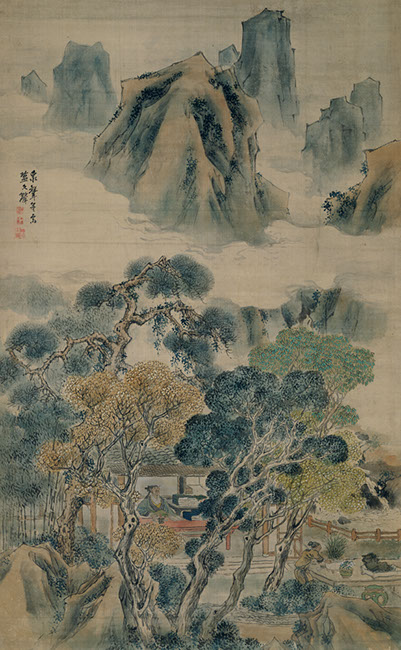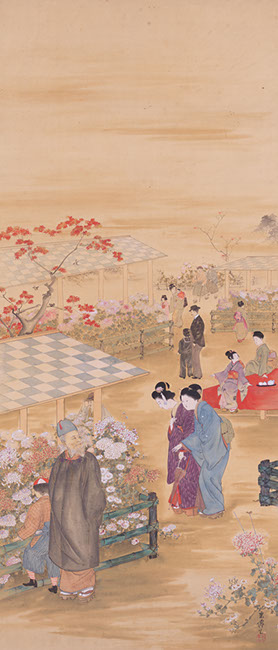Exhibitions
Kono Bairei A pioneering figure of modern Kyoto art
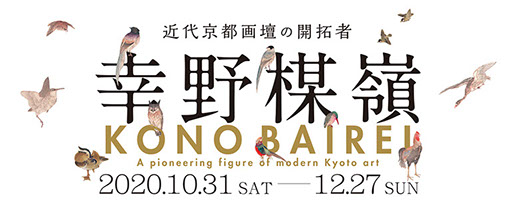
Welcome to “Kono Bairei: A Pioneering Figure of Modern Kyoto Art.” This exhibition explores the life of Kono Bairei (1844–1895), a painter active during the tumultuous times from the end of the Tokugawa shogunate to the start of the Meiji era.
Bairei was born in Kyoto. He studied painting under Nakajima Raisho (1796–1871), a painter from the Maruyama school, and Shiokawa Bunrin (1808–1877), an artist affiliated with Kyoto’s venerable Shijo school. Bairei’s works followed in the footsteps of the Shijo school. He worked from sketches and he created many expressive, graceful flower-and-bird paintings. However, whilst inheriting earlier traditions, he also strove to paint new motifs and views, as epitomised by his paintings and sketches depicting carefree birds, wild grasses and landscapes.
In addition to his own painting career, Bairei was also active in society and he worked to ensure the prosperity of the Kyoto painting scene. His greatest achievement was the creation of Japan’s first art school with other contemporary painters like Kubota Beisen (1852–1906) and Mochizuki Gyokusen (1834–1913). He also established his own private painting cram school and he poured his energies into nurturing a new generation of master painters, including Takeuchi Seiho (1864–1942) and Kikuchi Hobun (1862–1918). He also promoted exchanges between painters from different schools and he played a central role in organizations such as the Kyoto Young Men’s Painting Society and the Kyoto Art Association. All these activities laid the groundwork for a new era and they established Kyoto as a major art hub alongside Tokyo.
This exhibition uses Bairei’s paintings to take a multi-faceted look at his life and work. It also introduces art by painters connected to Bairei, such as his teacher Nakajima Raishu, his dear friend Kubota Beisen, and his pupil Takeuchi Seiho. Also on display are picture albums and sketchbooks used in Bairei’s private cram school, for example. These were produced, collected and managed by Bairei as models and materials for his pupils. They were also used after Seiho inherited the school from Bairei. These materials paint a vivid picture of the passionate pedagogy that nurtured Seiho, Hobun and a new generation of painters. We hope you enjoy viewing all these artifacts and paintings that introduce the world of Kono Bairei.
Finally, we would like to express our deepest gratitude to those who loaned their valuable artworks and to everyone whose support made this exhibition possible.
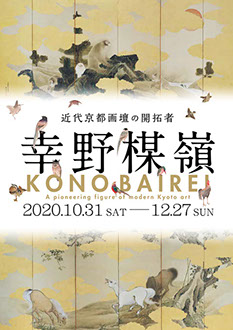
General Information
Hours: 10:00-17:00 (Last entry: 16:30)
Closed: Monday (except November 23rd), and November 11th, 24th
Admission: General admission: 1,000 yen, High school/university students: 500 yen, Junior high school students and younger: Free
*Admission is half price for people with disability certificates, etc. One accompany person is admitted free of charge.
*Groups of 20 or over will receive a discount of 200 yen per person.
Venue: Umi-Mori Art Museum (10701 Kamegaoka, Ohno, Hatsukaichi, Hiroshima)
With the support of: Hiroshima Board of Education and Hatsukaichi City Board of Education
Chapter 1 Kono Bairei: An artist who lived through tumultuous times
Kono Bairei was born in Kyoto at the end of the Edo period. He liked to paint from an early age and he began training to be a painter when he was nine. The period from the end of the Tokugawa shogunate to the start of the Meiji era was a ill-fated time for a young painter. Kyoto was devastated by fighting, so Tokyo became the political and cultural center of Japan. With people no longer able to afford paintings, the Kyoto art scene underwent a precipitous decline. It was under these circumstances that Bairei experimented with various painting themes and styles as he sought to carve out a career as a painter.
He produced many excellent flower-and-bird, people, and landscape pictures based on sketches. These include serene works that following in the footsteps of earlier generations. However, other works afford a glimpse of Bairei the modern artist. One example is The Enchanted Land. Though this painting adopts a traditional theme of a mythical island populated by Taoist immortals, the selection of motifs and the manner of depiction imbues the landscape with a sense of the real world.
Bairei lived though tumultuous times. These paintings reveal how he responded as an artist to the sweeping changes that accompanied Japan’s thrust towards modernization.
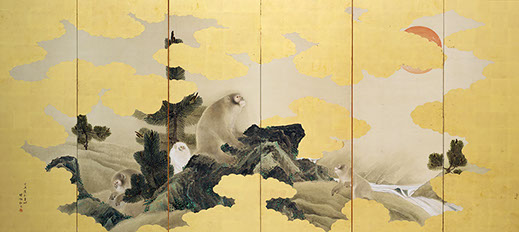
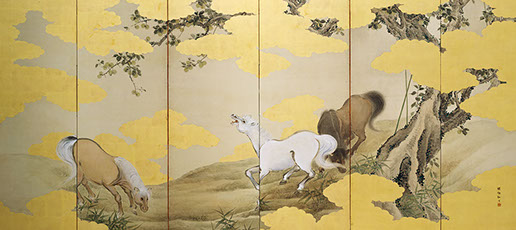
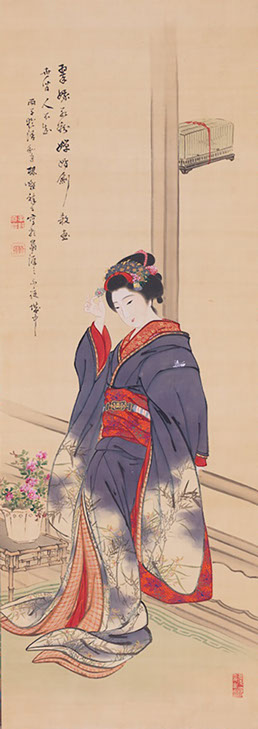
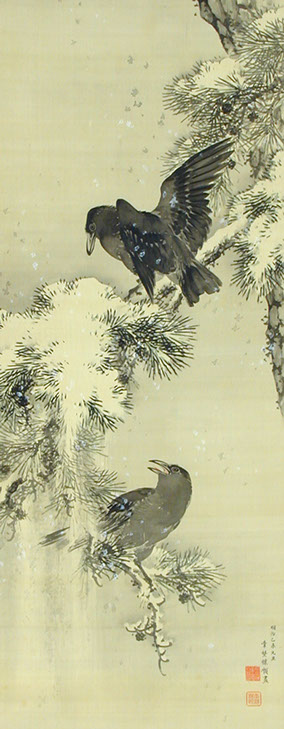
Chapter 2 The artists who surrounded Bairei
This chapter introduces the artists who surrounded Bairei.
In the beginning, Bairei was taught two different painting styles by Nakajima Raisho and Shiokawa Bunrin. During his time as an up-and-coming young painter, Bairei worked with other contemporary artists like Kubota Beisen to revitalize Kyoto’s art world through the establishment of Kyoto Prefectural Art School, Japan’s first public art school. He is also said to have had a friendly rivalry with another contemporary, Suzuki Shonen. Bairei also established his own private painting cram school and he poured his energies into nurturing a next generation of painters, including a quartet known as ‘Bairei’s Four Heavenly Kings,’ namely Kikuchi Hobun, Taniguchi Kokyo, Takeuchi Seiho, and Tsuji Kako. These important artists helped establish Kyoto’s presence as a painting center to rival Tokyo. All these works reveal how Bairei worked with many other artists to forge a new era.
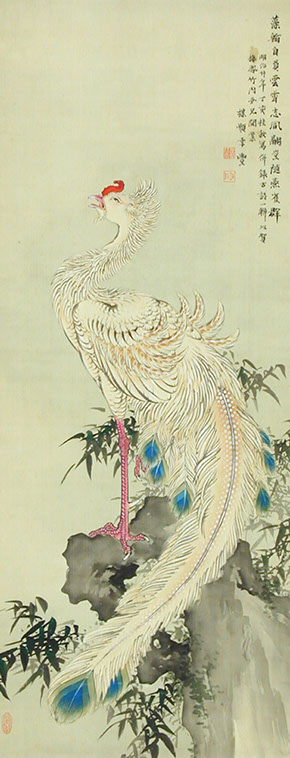
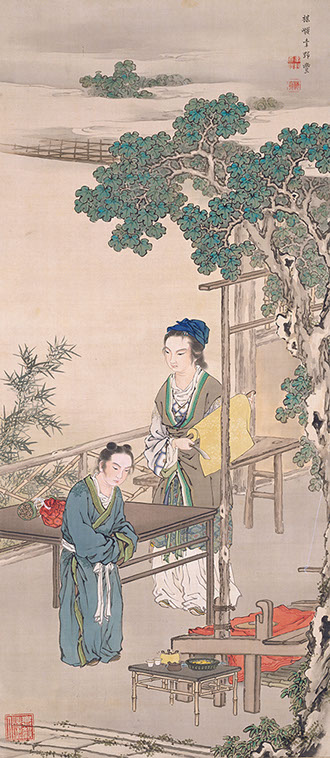
Chapter 3 Bairei the educator
Bairei is widely acclaimed as a painter who nurtured a new generation of artists. It is said he encouraged his pupils by telling them “I am happy to be your stepping stone, so use me to step up and succeed as an artist.” At his own private cram school, he taught his students core painting techniques based on a curriculum that encompassed brushwork, sketching, and the copying out of classic paintings, for example. He also arranged his teaching materials into different categories, including copies, sketches and the rough drafts of his own paintings. These provided models to follow and they enabled Bairei and his pupils to learn about different painting themes.
Bairei also created and published numerous picture albums to serve as exemplars when creating paintings. These were also used by painters outside the school, with Bairei’s influence spreading far and wide.
This chapter paints a picture of Bairei as a passionate and extraordinary educator. It does so through materials such as for Chinese Phoenix, which was presented to his pupil Takeuchi Seiho when he became independent, and Teaching Mencius’ Mother Cutting Threads of a Loom an instructive work that was gifted to the painting school.
